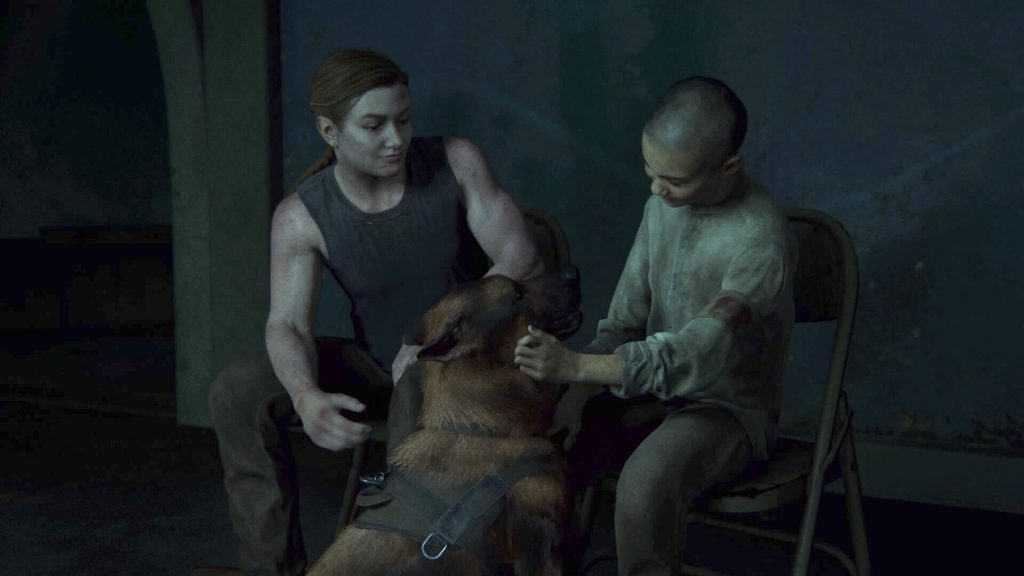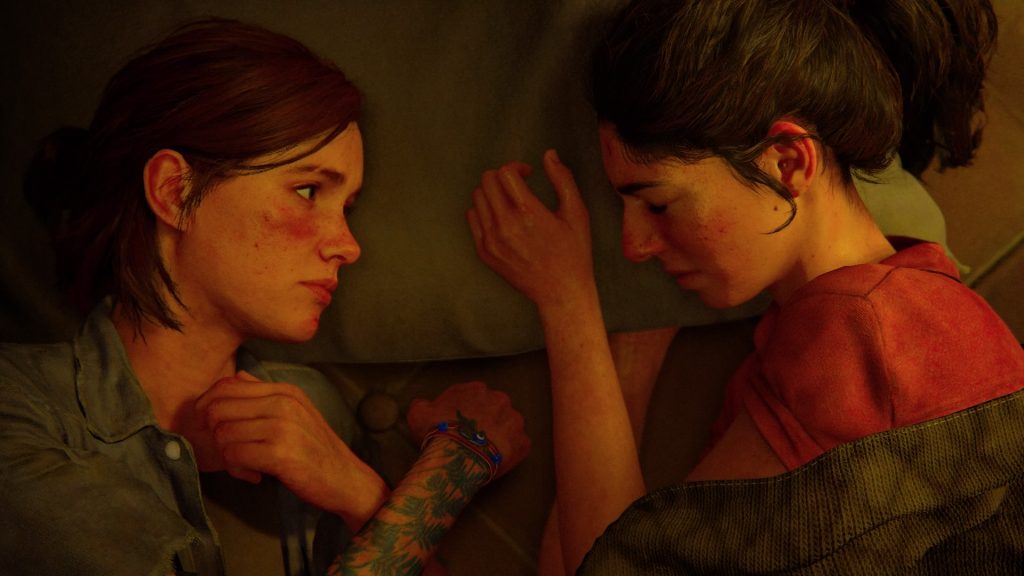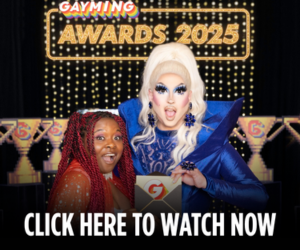How The Last of Us Part 2’s world still allows queer prejudice to thrive in society

Being queer in The Last of Us Part 2’s world is a complicated thing to be. You’re told that almost immediately during the opening sequence of the game, where character Jesse informs us that Dina, Ellie’s best friend turned girlfriend was called a ‘not so nice word’ after she kissed Ellie the night before. It’s a strange opening, but it at least establishes that even in this decaying world, homophobia is still present. Not great, but not entirely unexpected.
There are more than a dozen moments where queer love is acknowledged in this game with no real fanfare or spectacle. Ellie and Dina’s relationship is a big part of the game’s story, either by giving Ellie more reason to fight or be conflicted by what she has to do. While the representation of a lesbian and bisexual woman as the main players in this story is great, it’s clear to see that being queer in this harsh, unforgiving world still follows the same, painful societal standards of before.
We know through playing the game that homophobia and transphobia are still around, but the reasoning behind that is an interesting one. While characters like Ellie, Dina and Lev are born into this scarred world, with knowledge of previous society learned from their parents, characters like Joel, Maria, Tommy and Bigot Sandwiches himself, Seth, exist on both sides. They have learned to adapt to this new world, but with the knowledge of the trauma, oppression, and prejudice that was apparent even before the outbreak. In regards to Seth, he is old enough to even know the ‘right’ hateful words to throw at Dina in the first place. The fact that Ellie and Dina react negatively to it shows they know what it means, and conveys a simple truth: that the prejudice of the old has bled into that of the new.
The way violence against queer characters is used in The Last of Us Part 2 is far different from what I first expected when the game was first teased. After all, it seemed like a case of ‘bury your gays’ at first, and nothing could be more boring and downright insulting. So it surprised me that instead of actual physical violence – which there is plenty of, regardless of a character’s sexuality – it was in fact, structural violence, that was often thrown at Ellie, Dina and Lev’s way. Ellie and Dina I’ve already mentioned, but Lev gets deadnamed often and while the story doesn’t paint those who are calling Lev this in a brilliant light at all, it speaks volumes about the Seraphites way of thinking. A highly religious group, they adopt the structural ways of days of old, forcing people into strict, gender roles and becoming violent against even a whisper of change. When Lev shaves his head, he and sister Yara are cast out from their community.
Lev’s circumstances are, of course, much more severe and dangerous than the microaggressions that Ellie and Dina face. But that doesn’t stop the intent: that the hateful bias of before is still very much around in this world and unlike before, there’s nothing – not even a threadbare law that can be conveniently disregarded whenever it suits – stopping anyone from trying to hurt or shame you because of it.

For Lev, his death is seen as the only answer to breaking away from the rigid gender roles of his community. For Ellie and Dina, their love for one another is still considered something overtly sexual in a community that’s seemingly full of loved up couples. Even when people are accepting, the fact that in a flashback, Ellie shows concern about telling Joel she just likes girls says a lot about what sort of things she has learned from her community. In a world where you could die tomorrow, Naughty Dog’s disbelief in humans being kinder and instead falling into the same old cycles of systematic violence against one another is disheartening, but ultimately, expected in this series.
That said, it isn’t all doom and gloom. The Last of Us Part 2 does try and give us different nods and perspectives to what being queer means in this new world outside of characters being considered outliers in their community. For the most part, Ellie and Dina’s love for one another is never brought into question by the main cast as being ‘lesser’ to that of Dina’s past relationship with Jesse. Beyond that, we see Ellie and Dina joking that in a queer erotica book section that the two girls on the cover are them. It’s a nice, quiet moment where they are allowed to express their feelings for one another without the weight of the world on their shoulders.
There’s also labels, or rather, the lack of them. Lev never gets described as being a trans man, nor does the game state Ellie is a lesbian, or that Dina is bisexual. Instead, we’re left to interpret through their actions, and to be honest, it’s freeing. Labels can be important, but in this world at least, they don’t hold the same weight as they did before. At the end of the day, love and being true to who you are in The Last of Us Part 2 is far more significant. More importantly, it doesn’t require a label.
Queer prejudice is rooted in The Last of Us Part 2’s society, but as we learn through Ellie, Dina and Lev, that doesn’t mean there is no hope in existing. Not when we rebel against the constraints of this prejudice, and make the world our own.









finally a well written and sensible article, thank you! I loved this game and hope the devs won’t be discouraged by all the hate it has gotten